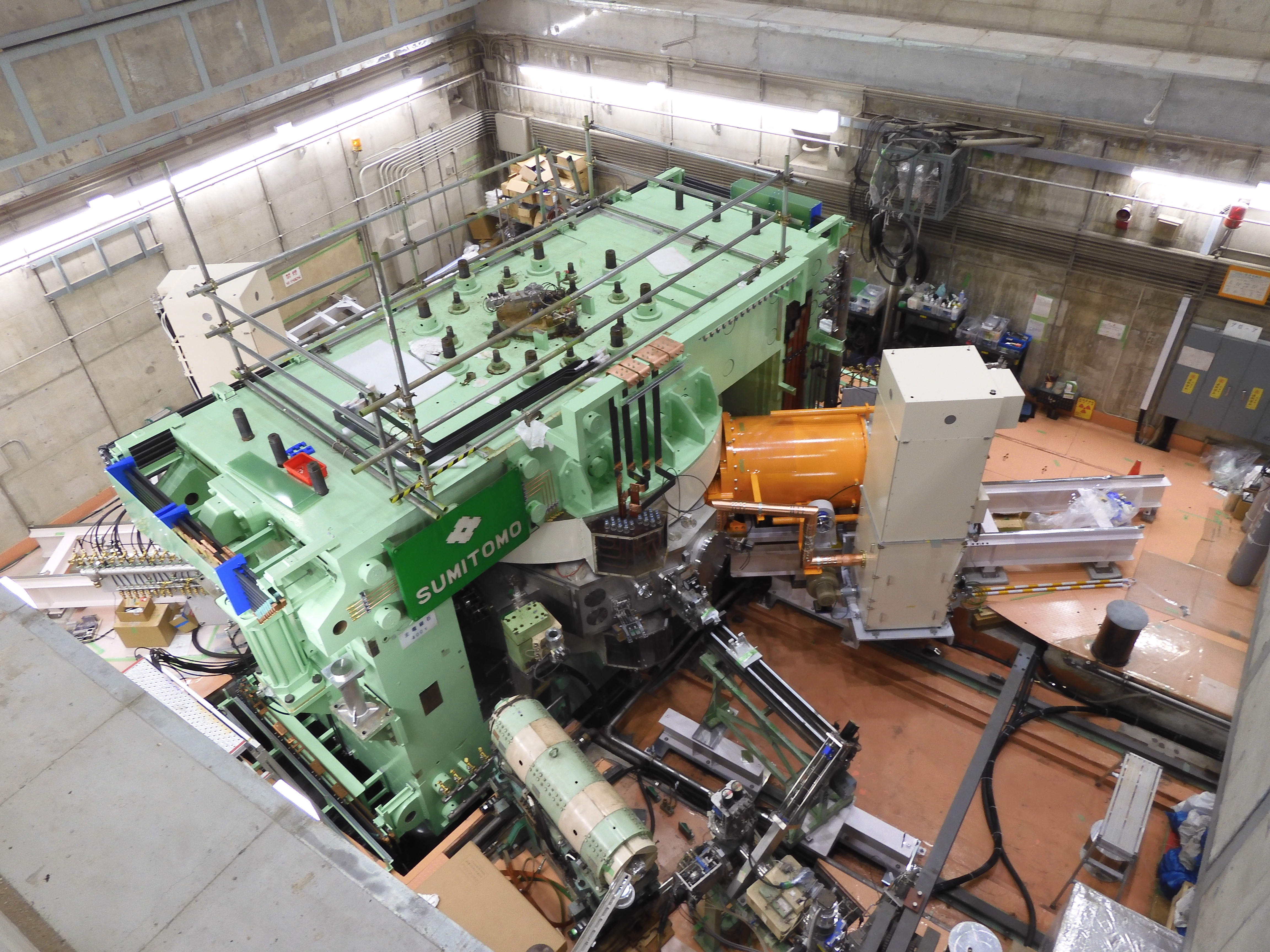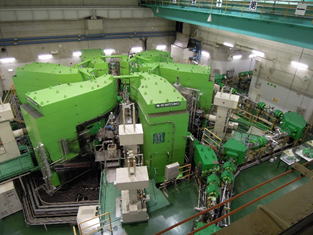Overview
The RCNP cyclotron facility operates as a national and international joint-use / joint-research center, open to researchers conducting research on nuclear science and applications utilizing accelerators. The facility houses the K140 AVF cyclotron and the K400 Ring cyclotron, capable of accelerating spin-polarized proton beams up to 400 MeV. Heavy-ion acceleration is also available; for light-mass ions, energies up to 100 AMeV can be delivered.
These primary ion beams are used not only as high-resolution, high-intensity beams for experiments, but also for producing a variety of secondary beams, including quasi-monoenergetic fast neutrons, white neutrons, radioactive ion (RI) beams with neutron- or proton-rich isotopes, and muon beams. Proposals from researchers at universities and institutes worldwide cover nuclear physics, fundamental physics, nuclear engineering, radiochemistry, and nuclear medicine. We also emphasize education for undergraduate and graduate students, offering hands-on experimental opportunities through the joint-use framework.
| 1962 | The Science Council of Japan recommended the establishment of a national nuclear-physics institute. |
| 1971 | RCNP was founded as a nationwide joint-use center (First Director: Shotaro Yamabe). |
| 1973 | AVF cyclotron (K=140 MeV) completed. |
| 1976 | Launch of joint-use experiments. |
| 1987 | Construction of the Ring Cyclotron facility began. |
| 1991 | Ring cyclotron (K=400 MeV) completed. |
| 2005 | Partial upgrades and extensions of AVF/Ring cyclotrons, beamlines, and control systems. |
| 2019 | Facility building and infrastructure refurbishment. |
| 2020–2021 | Upgrade of the AVF cyclotron. |
| 2022 | Beam commissioning and initial test operation. |
| 2023 | Full-scale restart of joint-use experiments. |
(Note) The above lists major milestones. For technical upgrades and facility renovations in detail, please refer to the RCNP annual reports and related documents.

Fig. Bird's-eye view of the RCNP accelerator facility (including the AVF/Ring cyclotrons and beamlines).
The RCNP accelerator complex consists of two variable-energy, multiparticle cyclotrons configured in cascade:
– K140 AVF Cyclotron (in operation since 1973; upgraded in 2021)
– K400 Ring Cyclotron (in operation since 1991)
The maximum energies of the Ring cyclotron are 420 MeV for protons and 100 MeV per nucleon for heavy ions. A wide variety of ion beams is delivered for research in nuclear physics, radiochemistry, and related interdisciplinary fields. The AVF cyclotron serves as the injector for the Ring cyclotron and is also used as a stand-alone machine.
An ultra-high-quality beam with an energy spread of ΔE/E ≈ 10−4 is a hallmark of the RCNP accelerator facility. This performance is achieved by combining a flat-top acceleration system in the Ring cyclotron with a high-precision temperature-control system for the magnet cooling water. Using this high-quality beam together with the Grand Raiden spectrograph and dispersion matching, a world-record energy resolution of ΔE/E = 5 × 10−5 was achieved. The intense 400 MeV proton beam is supplied to neutron sources and to the MuSIC muon source. Heavy-ion beams are utilized directly as primariy beams and also for producing RI beams in the EN beam course.
AVF Cyclotron
|
Ring Cyclotron
|


